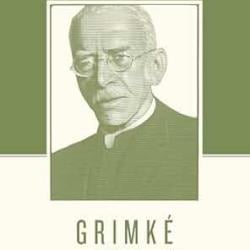Review of Museum Hours, Directed by Jem Cohen
Museum Hours is an illustration of how to appreciate art and the lessons it offers. A Canadian woman named Anne (Mary Margaret O’Hara) finds herself in Austria to attend to a hospitalized cousin who is in a coma. On her initial search for the hospital, Anne enters the Kunsthistorisches Museum in Vienna looking for directions. She finds the answers from the elderly Johann (Bobby Sommer), one of the museum’s security guards. A friendship blossoms as Anne regularly visits the museum, making it a home away from home as she wanders aimlessly in an almost purgatorial state, unsure what to do as she waits to see what happens with her cousin.
Touring the musuem, Johann and Anne discuss what the European masters teach us about life–the most important for Museum Hours being Pieter Bruegel the Elder (1525-1569). By choosing Bruegel as our instructor, director Jem Cohen instills in audiences an appreciation for the mundane and the unnoticed.
Perhaps the climax of the film (though lacking in emotional drama) is a tour of Bruegel’s paintings conducted by a tour guide to a group of foreigners visiting the Kunsthistorisches Museum. The visitors are treated to explanations about The Peasant Wedding and how Bruegel actually spent time among the peasants to understand their way of life. In the Tower of Babel the architectural feat sits center stage, but the guide points out the small figure relieving himself on the shore. Bruegel’s Battle Between Carnival and Lent is packed full of individuals, no single one the clear object of focus, but each endued with significant details that hint at personality.
If Museum Hours pivots on this sequence of expositions, Bruegel’s Conversion of St. Paul is the fulcrum. The guide argues that Paul may in fact not be the anchor of the painting, seeing that it is at times hard to even locate the apostle the crowds bustling along the road to Damascus. Rather irreverently, she points out that Bruegel painted the horses’ posteriors brightened by sunlight, potentially drawing attention to them. For the guide, she argued that for her, the protagonist of Conversion of St. Paul is a small little boy wearing armor a size too large for him, standing at attention beneath a tree. The message seems clear: we must appreciate the overlooked.
Cohen highlights this lesson with the deliberately paced scenes where we see a lost piece of clothing lying on the street, vendors selling trinkets, and deserted streets in Vienna. The whole film feels rather desolate, with Johann and Anne the only interlocutors. In many ways, Anne’s whole plight in Austria is like one of these unnoticed figures in Bruegel’s paintings. When she learns her cousin has passed, we do not see the packed funerals (or even the empty ones) that we are accustomed to seeing in movies. It is rather as if no one has noticed she has died except for Anne and Johann.
Museum Hours invites us to look at life in all its details, making each moment and each person worth considering. Scripture is paradoxical in this regard. On the one hand, we are called to understand our own insignificance in light of a great God, while on the other hand, realizing that not one sparrow falls to the ground outside the Father’s care.












